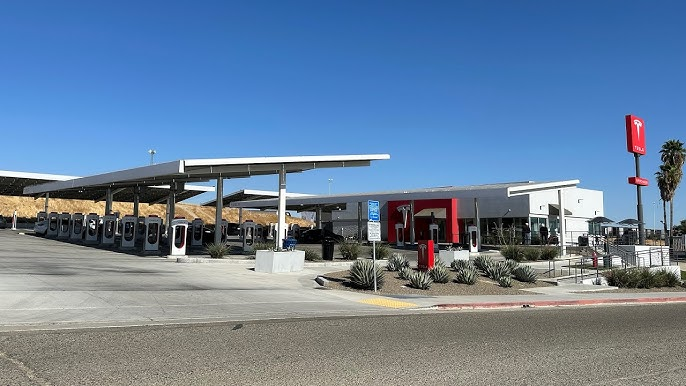Imagine breezing through a 500-mile road trip with just a couple of pit stops, each lasting no more than the time it takes to grab a coffee and a sandwich. In 2024, this is no longer just a dream for electric vehicle (EV) owners, thanks to the proliferation of ultra-fast EV chargers. According to a recent report by Bloomberg Green, the installation of ultra-fast chargers has increased by over 150% globally since 2021. This technological leap is transforming how we perceive and experience road trips, making them not only feasible but also enjoyable in electric cars. In this article, we will explore how ultra-fast chargers are redefining the future of road travel, the technology behind these innovations, and how you can plan your next EV adventure with confidence.
The Rise of Ultra-Fast EV Chargers
Understanding Ultra-Fast Charging Technology
Ultra-fast chargers, often referred to as Level 3 chargers, are capable of delivering over 150 kW of power, with some models pushing that to 350 kW and beyond. This results in significantly reduced charging times, often recharging an EV battery from 20% to 80% in just 15 to 30 minutes. Brands like Tesla, with their Supercharger V3 network, and Ionity in Europe are leading the charge, quite literally, in this field. According to Electrek, the Tesla Supercharger network alone accounted for over 35% of all ultra-fast charging stations worldwide as of 2023.
The Role of Battery Technology
The effectiveness of ultra-fast chargers is directly tied to advances in battery technology. Solid-state batteries, which are expected to dominate the market by 2025, are designed to handle faster charging with less heat generation and longer life cycles. Companies like Rivian and Lucid Motors are actively investing in these technologies, aiming to offer vehicles that can fully utilize the power of ultra-fast chargers.
Global Expansion of Charging Networks
International efforts to expand charging infrastructure are pivotal to the revolution of EV road trips. The IEA reports a 50% increase in public ultra-fast charging stations globally from 2022 to 2023. Key players like Volkswagen and Hyundai are collaborating with energy companies to create extensive charging networks along major highways, making cross-country travel in an EV more accessible than ever.
Planning Your EV Road Trip in 2024
Choosing the Right EV for Long-Distance Travel
When planning a road trip, selecting an EV with a suitable range and charging capability is crucial. Models such as the Tesla Model S, Hyundai Ioniq 6, and Ford Mustang Mach-E are excellent choices, offering ranges of over 300 miles on a single charge. Check the vehicle’s compatibility with ultra-fast chargers to ensure a seamless travel experience.
Mapping Your Route with Charging Stations
Tools like PlugShare and A Better Routeplanner are indispensable for EV road trips. These apps help you locate ultra-fast charging stations along your route and provide real-time updates on their availability. Make sure to plan your stops according to your vehicle’s range to optimize your journey.
Practical Tips for Efficient Charging
- Charge to 80%: For optimal battery health and quicker stops, aim to charge your battery to 80% rather than 100%.
- Avoid Peak Times: Charging stations can be busier during weekends and holidays. Try scheduling your stops during off-peak hours.
- Stay Informed: Subscribe to updates from charging networks like Electrify America or EVgo to get the latest on new station openings.
The Future of Road Trips in Electric Vehicles
Sustainability and Cost-Effectiveness
Apart from convenience, ultra-fast chargers significantly enhance the sustainability of road trips. EVs are inherently more eco-friendly than traditional vehicles, and with renewable energy increasingly powering charging stations, the carbon footprint of road travel is drastically reduced. Additionally, the cost savings of driving an EV—thanks to lower fuel and maintenance costs—make electric road trips a financially smart choice.
Emerging Trends and Innovations
Looking ahead, we can expect further innovations in charging technology. Dynamic wireless charging, which allows vehicles to recharge while driving, is in development stages and could revolutionize how we approach long-distance travel. Moreover, as governments worldwide push for greener policies, we can anticipate increased investment in EV infrastructure, further easing the transition to electric road trips.
Conclusion: The Electrifying Road Ahead
In conclusion, ultra-fast EV chargers are not just changing how we travel; they are redefining the very essence of road trips. By drastically reducing charging times and expanding charging networks, these technological advancements make long-distance EV travel more practical and enjoyable than ever before. As we continue to embrace sustainable living, ultra-fast chargers play a crucial role in facilitating eco-friendly adventures. So, are you ready to hit the road in 2024 with your electric vehicle? The open road awaits, and with ultra-fast charging technology, the journey promises to be electrifying. Keep an eye on the latest developments, and plan your next road trip with confidence, knowing that the future of travel is here and it’s electric.

